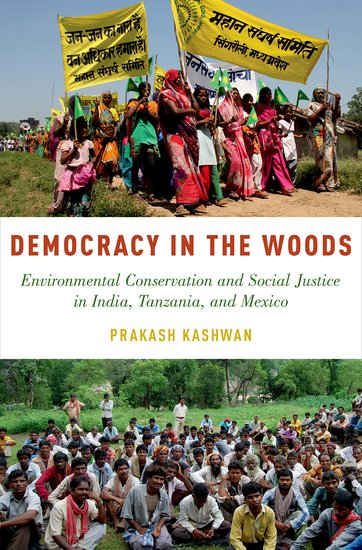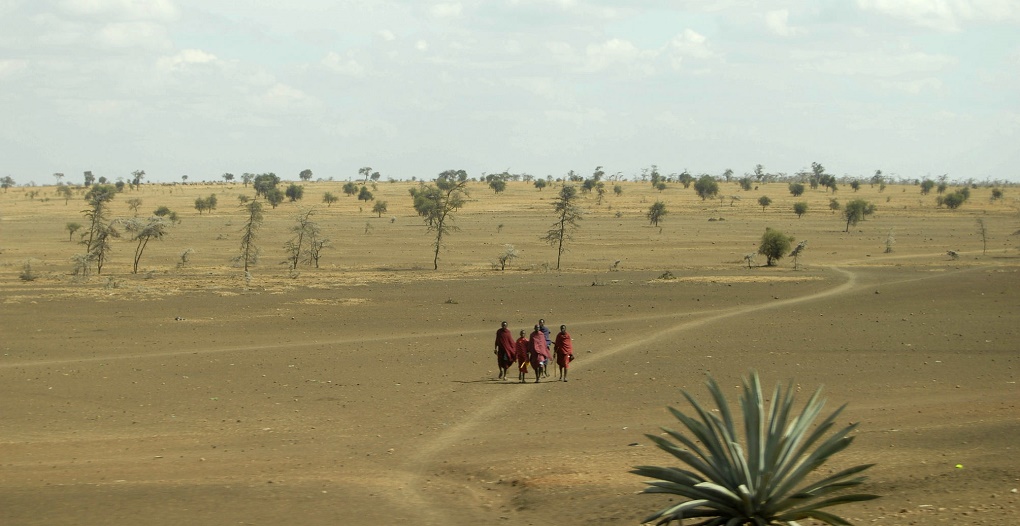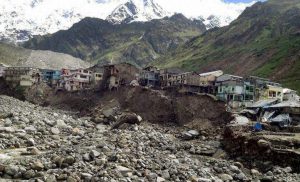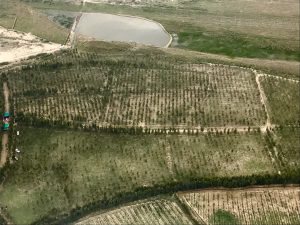On 5 September 1921, the first King of Bhutan, Druk Gyalpo Ugyen Wangchuck, sent a letter to Rufus Isaacs, the then British Viceroy of India, outlining a twenty point plan for the development of the country, and asking for help. More interesting than the letter is the reply he received, in which the Viceroy offered to help in return for Bhutan opening up its forests for timber harvesting. Ugyen Wangchuck refused the offer, and Bhutan’s modern development had to wait almost another four decades when his grandson, Druk Gyalpo Jigme Dorji Wangchuck, supported by independent India’s first Prime Minister, Jawaharlal Nehru, embarked on Bhutan’s transformation.
Today Bhutan’s forest cover is key to its green credentials. With 75% of its land area covered by forests, and a Constitutional clause that states that not less than two thirds of its area will be covered by forests, Bhutan absorbs three times more CO2 than it produces. Its pledge at the climate summit in Paris in 2015 was considered the most ambitious of those presented.
Reading Prakash Kashwan’s “Democracy in the Woods: Environmental Conservation and Social Justice in India, Tanzania, and Mexico”, published by Oxford University Press, it becomes obvious that avoiding the British colonial exploitation of forest land for “scientific management of forest land” and Bhutan’s green credentials are interlinked. The book does not mention Bhutan, focussing on the three countries mentioned in its subtitle, but its importance is the applicability of its lessons to a global situation where forests are a site of contestation. In his book, Kashwan, an assistant professor of political science at the University of Connecticut, explores the colonial roots of the clash between forestry laws and the rights of forest dwellers, the use/abuse of environmental legislation by post-colonial leaders, and mobilisation by forest dwellers for their rights.

There is no easy way to link the three countries in question. While India and Tanzania shared the experience of British colonialism and British law, Mexico experienced a very different form of colonialism under the Spanish crown. The key difference was the ideas of John Locke as expressed in his influential tract, “On Property”. Given that Locke was “secretary to both the Lord Proprietors of Carolina (1668-75) and the Council of Trade and Plantations (1673-75)” it is little surprise that his formulation of land rights privileged the rights of colonial usurpers over that of forest dwelling communities.
Locke was not the first member of an elite ruling class to present a political argument in favour of appropriating land from people deemed to be wild and uncivilised. According to the ancient Hindu code of conduct outlined in Manusmriti written between 400 BC and 200 AD, the duties of royal authority include protecting the “sacred right of first possession for the people who clear the land, even if they have taken use of the land away from others – for example, hunters and pastoralists.” Much later in medieval India, the Mughal Emperor Aurangzeb reiterated Manusmriti’s tenets on the sacred right of first possession when he declared that “whoever turns (wasteland) into cultivable land should be recognised as the (owner) and should not be deprived (of land).”
Locke’s ideas of land rights had a massive influence on property rights in India and Tanzania, where British authorities – often with the willing collaboration of local elites – stripped forest dwelling inhabitants of access to forests that they had used. Swidden agriculture, with uses cutting and burning plots for temporary cultivation, became a key aspect of labelling forest dwellers and their practices as dangerous and anti-environmental. Colonial racism married to local prejudices were a potent combination to destroy the livelihoods of adivasis (indigenous peoples) in India and the Maasai in Tanzania, destroy their homes and turf them off of their lands. Colonial laws, with broad powers – the 1927 Indian Forest Act, still in power today, states that “all activities are prohibited unless permitted” – allowed forest departments almost unlimited discretion over forest dwellers.

The crimes of colonialism were followed by acts of newly independent states where the government used development to accrue legitimacy. In both India and Tanzania, colonial authorities enacted some of the strongest forestry legislation in the world in fear that the “natives”, in a fit of land redistribution, would destroy the beautiful forests and wildlife. This ignored a history of destruction of habitat by land clearing for plantations by colonial regimes and the orgy of hunting when visiting dignitaries would kill tigers, rhinos and other big game. Forest communities continued to be marginalised even if they were not the ones directly responsible for such huge biodiversity loss. Adivasis in India were not allowed back on their traditional lands, and despite being 8% of the population, make up 40% of those displaced by development projects such as mega dams. Nehru declaimed to them that if they had to suffer, at least they were suffering in the national interest. In Tanzania, the Maasai were turfed out of their lands, and peasants forced to relocate into villages.
One of the prime motivations for this was an environmental-political complex that played out in the decades after independence. As Kashwan shows, the third Indian Prime Minister, Indira Gandhi, who suspended Constitutional rule by declaring an “emergency” in 1975-77, used the passing of strict environmental regulations as a way of burnishing her “green” credentials while facing criticism for human rights violations, and later used Project Tiger to raise funds from environmental organisations overseas. In Tanzania, Julius Nyerere, who governed as the head of the one party state from 1964 to 1985, said in 1961, “I do not want to spend my holidays watching crocodiles. Nevertheless, I am entirely in favour of their survival. I believe that after diamonds and sisal, wild animals will provide Tanganyika with its greatest source of income. Thousands of Americans and Europeans have the strange urge to see these animals.”
The newly independent states of India and Tanganyika/Tanzania continued to deploy environmental arguments against the rights of forest dwelling inhabitants, often using international support. They also received support from elite groups within their countries, who were more interested in the aesthetics of nature, but who did not live in forested areas, or were dependent on them for their lievelihoods. In contrast, in Mexico strong land rights and local mobilisation meant that, “the Mexican national government has often gone out of its way to market nature conservation initiatives as a means to improve peasant welfare and promote rural development.” Much of this is also because of the structures of representation in India, Tanzania and Mexico. In the first two, the forest dwelling inhabitants have been marginal to the politics of the country, while in Mexico multiple actors saw it in their interest to protect the rights of peasant groups.
In Chapter 7, Kashwan marries the understandings brought out from this understanding of historical laws, the use of “environmental” arguments by colonial and post-colonial regimes, and political mobilisation of forest dwelling groups, to assess forest-based climate change mitigation polices in the three countries. Except in the case of Mexico, states have expanded the powers of forestry departments at the cost of local inhabitants, but, conversely, the forestry departments have been ineffectual when faced with “development projects” that seek to extract mineral or other resources from forested areas. All of this is facilitated by murky land rights. According to the former Governor of the Reserve Bank of India, Raghuram Rajan,
Unfortunately powerful interests who thrive on…murkiness of land rights never want any reforms to see the light of day. This group of powerful “insiders” includes corrupt politicians, well-connected industrialists, developers and the mafia. The control much of the land market and make enormous monopolistic gains.
It is the large private landowners and the huge “development” projects that are driving deforestation, not the people living near the forests, who benefit from it – and in whose interest it is to keep the forests alive. As the world aggressively pursues programmes such as “Reducing emissions from deforestation and forest degradation” (REDD+), it is worth looking again at how important it is to marry social justice with environmentalism. As Kashwan’s excellently researched book shows, choosing between land rights of the peasants and forest dwellers and environmental sustainability is a false choice. Clear land rights to those that live within and along forests has benefited both marginalised populations as well as the environment.
As the example of Bhutan shows, the long-term effects of not surrendering the rights of both forests and forest dwellers has led to both the well-being of populations and of the environment. One does not have to go all the way to Mexico to see that from South Asia.
![<p>Although they are 8% of the population, adivasis account for 40% of those displaced by development projects in India [image by Indianature SG]</p>](https://dialogue.earth/content/uploads/2017/04/Indianature-SG-Adivasi-house.jpg)







